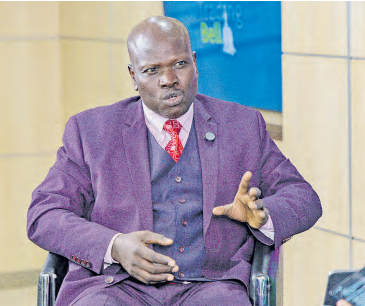

The country should move to increase electricity generation, Kenya Power now says, as consumption threatens to outstrip supply.
On Monday, the utility firm announced the country’s peak demand had hit 2,316 MW recorded on Wednesday last week, 12 MW higher than the previous peak of 2,304 MW recorded on January 15.
The new peak demand is against a firm capacity of 2,344MW. The country’s installed capacity is at 3,243M with an effective capacity of 3,056MW.
However, the firm capacity (2,344MW) is what Kenya Power is guaranteed of to meet demand consistently, meaning there is need to increase generation where some sources such as wind and solar have traditionally fallen depending on weather conditions and night factor (for solar), affecting overall injection to the grid.
“To meet the growing electricity demand, the focus should now shift toward increasing the country’s electricity generation. This will improve spinning reserves to the standard 15 per cent level to cater for contingency scenarios that have increased in recent years,” Kenya Power managing director and CEO, Joseph Siror, said.
According to Kenya Power, the growth in demand has largely been driven by investment in the stabilisation of the national grid and the construction of key projects including the completion of the Kimuka 220/66kV substation by KETRACO, from which Kenya Power built four 66kV feeder lines to serve Nairobi and adjacent counties.
The timely completion of other projects such as the 33kV double circuit interconnector between Narok and Bomet and network reinforcement projects have also enhanced power supply redundancy to ensure sustained sales.
The gains from the completion of these projects have been complemented by increased connection of new customers to the grid thus resulting in increased demand for electricity.
“The investment in upgrading transmission lines by Kenya Power and KETRACO has resulted in a more stable grid. In the last six months, we also connected over 198,535 new customers to the national grid. With improved grid stability and deployment of various connectivity projects, we expect a steady growth in electricity demand in the short and medium term,” said Siror.
The new peak hence puts pressure on Kenya Power which could be forced to ration power amid an increase on imports mainly from Ethiopia, to sufficiently stabilise the grid and serve the market even as it pushes for more production by lifting of the moratorium on Independent Power Producers (IPPs).
Statistics from Kenya Power’s National Control Centre show that peak electricity demand has been steadily growing over the last three years with the growth rate gaining momentum in 2024.
Electricity demand exceeded the 2,000 MW threshold towards the end of 2021 and peaked above 2,100 MW in 2022 but remained steadily below 2,200 MW in 2023 before regaining momentum in June 2024.
The Company is currently implementing the donor-funded Last Mile Phases IV and V. Both projects are expected to connect a total of 289,121 new customers to the national grid.
Kenya Power has been rationing electricity to some customers through load shedding to prevent the grid from collapsing.
This is due to rising demand and inadequate supply. Load shedding is the temporary interruption of electricity to parts of a power grid to prevent a blackout.
It’s a last resort that helps keep
the power grid stable and safe.
The firm is hoping the moratorium on new Power Purchase
Agreements will be lifted soon to
allow onboarding of producers to
help increase generation and meet
the rising electricity demand in the
country.




![[PHOTOS] Ruto at Pope Francis' burial](/_next/image?url=https%3A%2F%2Fcdn.radioafrica.digital%2Fimage%2F2025%2F04%2F844cb891-abd4-4ee5-bc2d-2a0c21fa3983.jpeg&w=3840&q=100)






